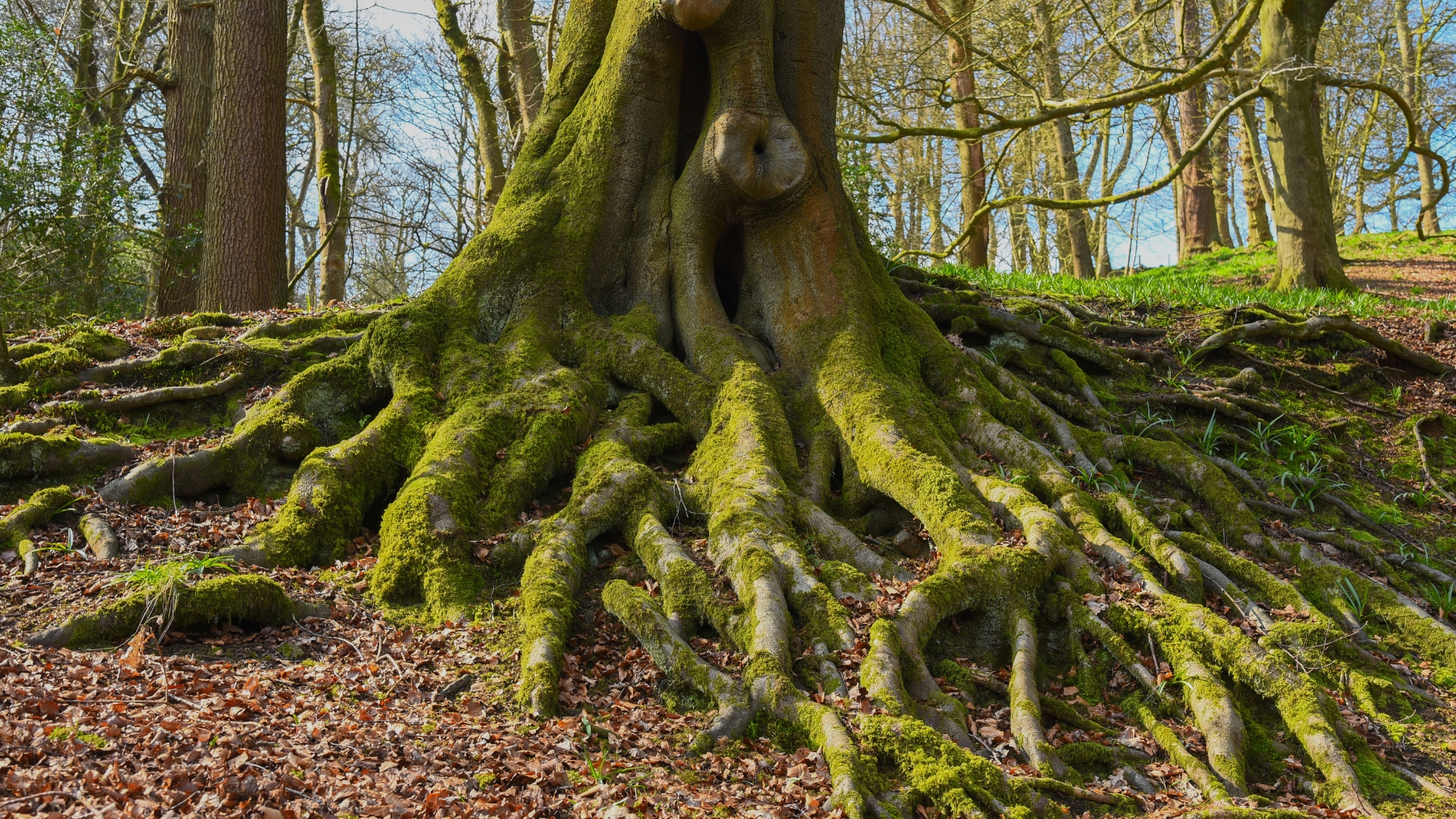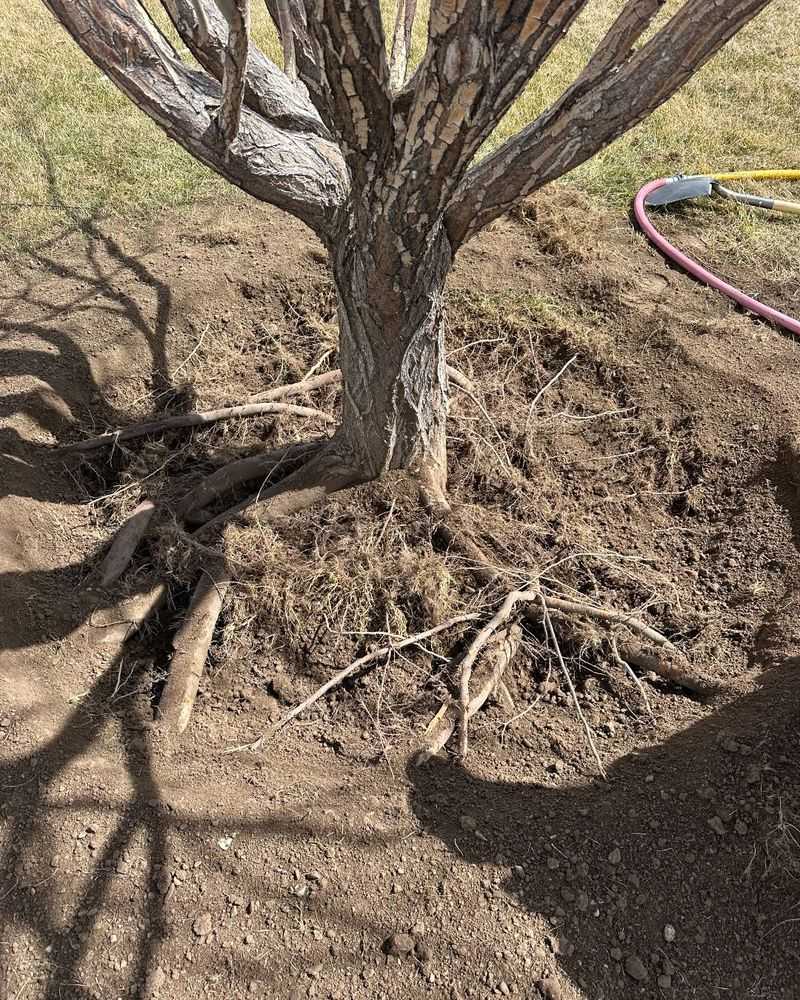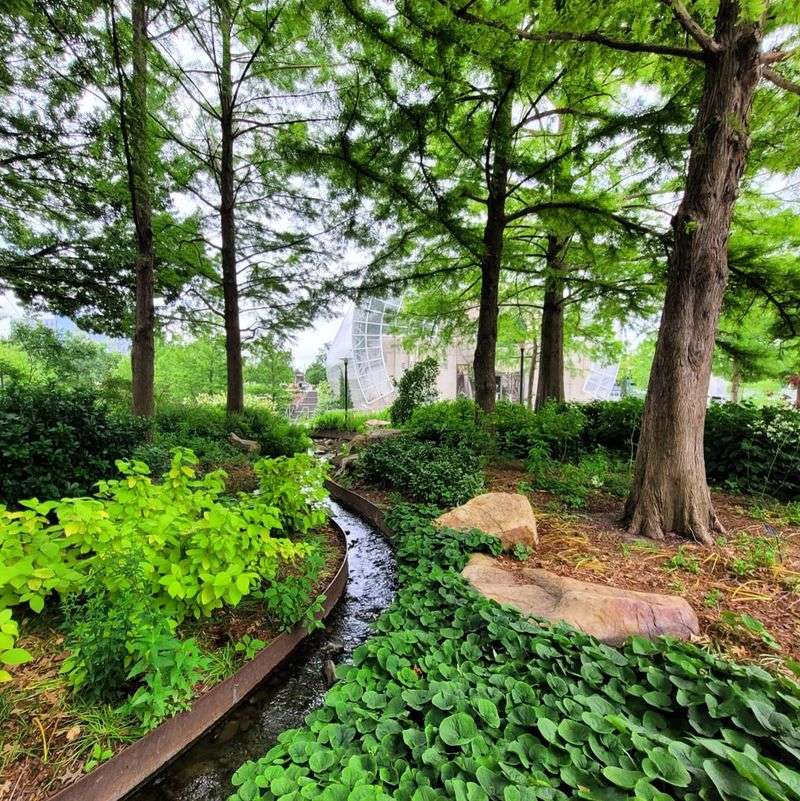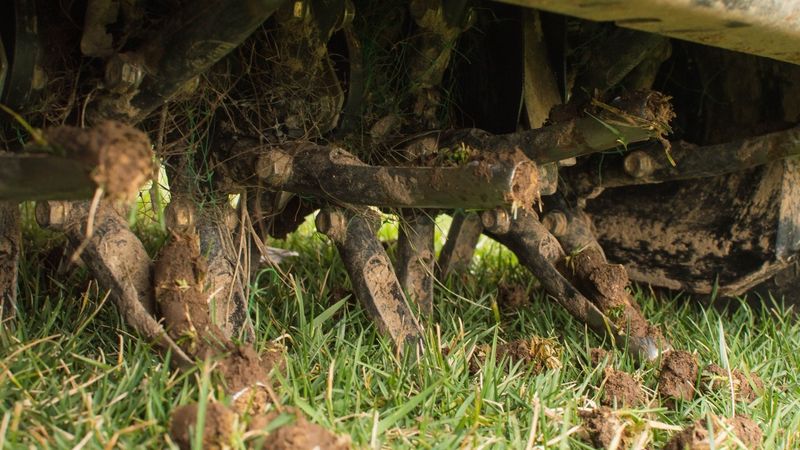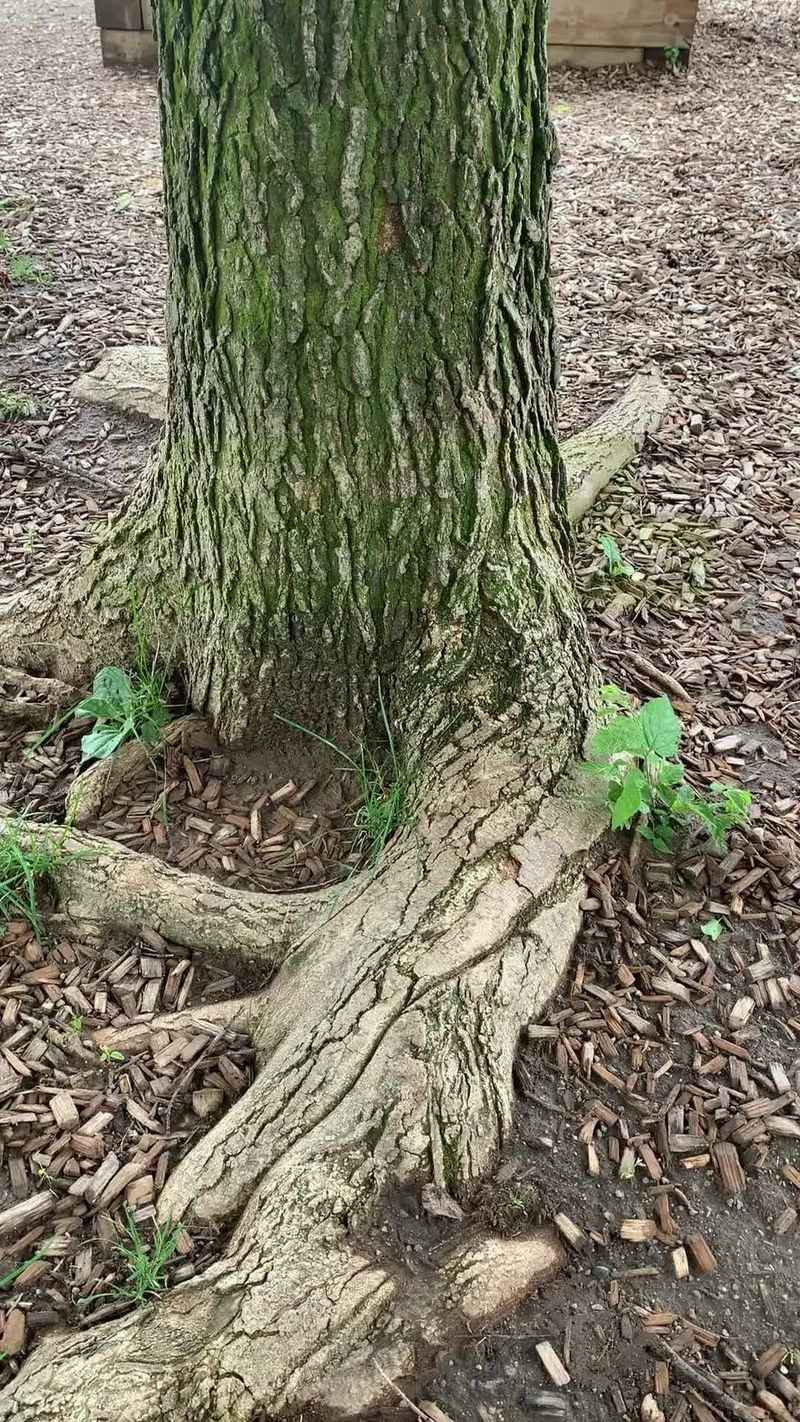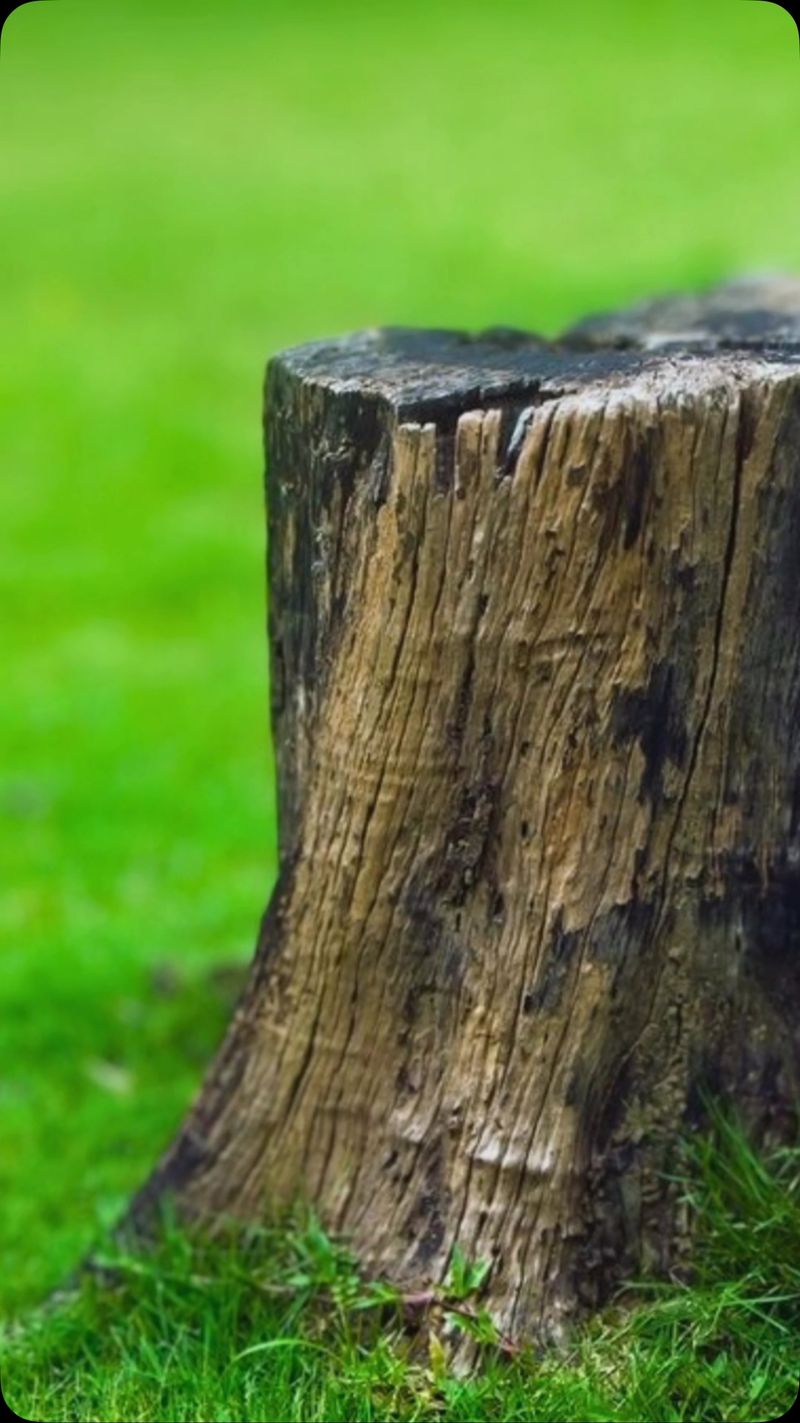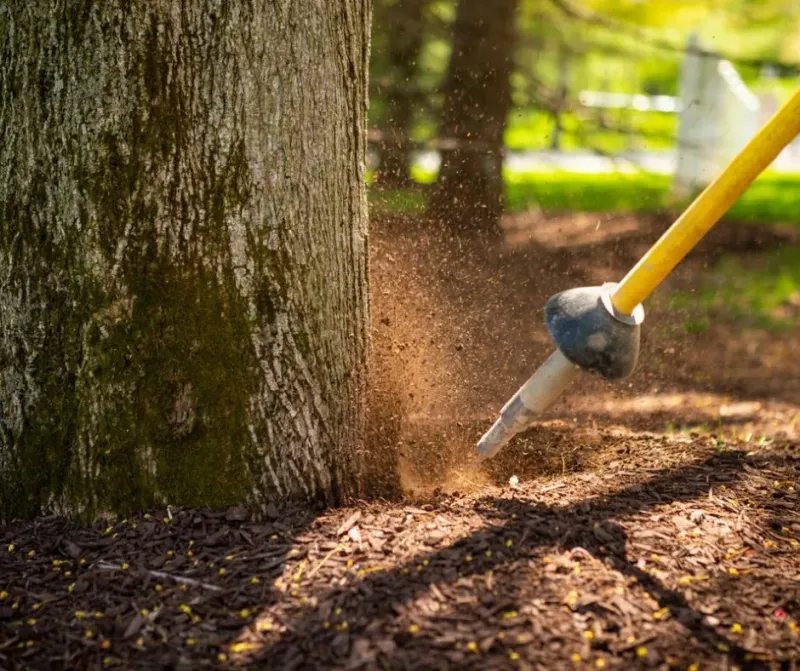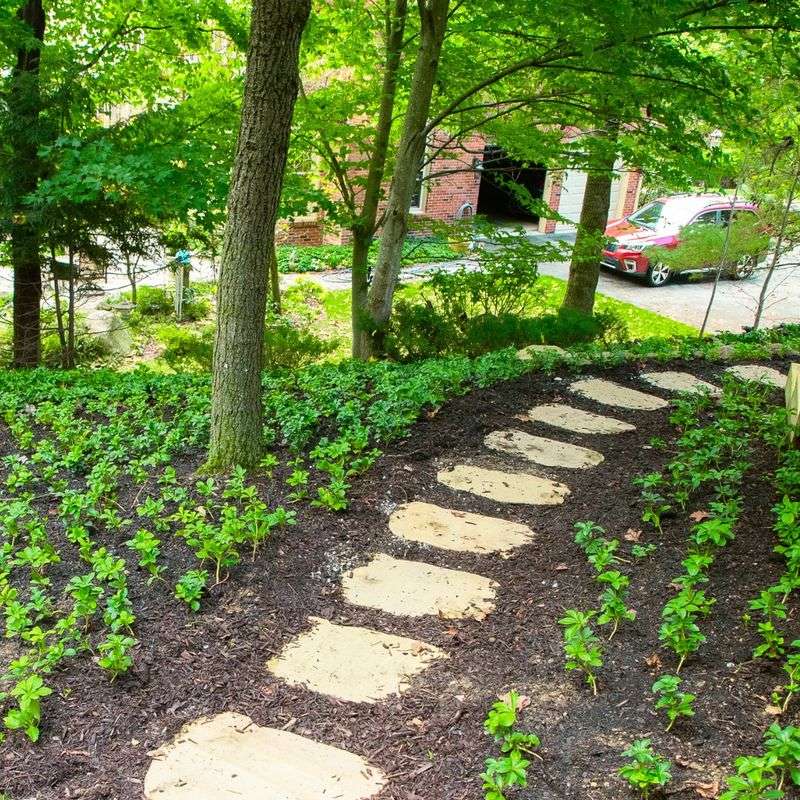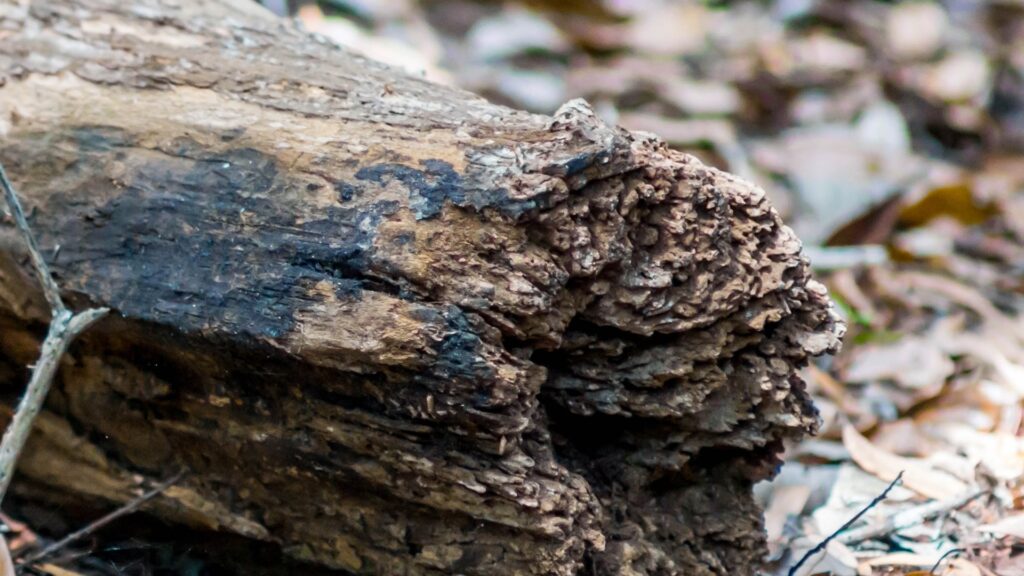Tree roots often rise above ground, turning lawns into a bumpy mess. Many homeowners try to hide them under soil, mulch, or even concrete—but that quick fix can slowly kill your tree.
Covering roots suffocates them, blocks water, and invites disease. Instead of masking the problem, learn why roots surface and how to care for them properly—your trees will thank you for years to come.
1. Suffocates the roots
Covering tree roots with soil, concrete, or other materials prevents oxygen from reaching them. Trees actually breathe through their roots! When you pile materials on top, you’re essentially putting a plastic bag over their respiratory system.
The roots will slowly suffocate and die back, weakening the entire tree. Weakened trees become more susceptible to diseases and pests that can finish the job.
Instead: Create a mulch circle around your tree using organic mulch like wood chips, keeping it 2-3 inches deep and not touching the trunk. This protects roots while allowing air circulation.
2. Promotes root rot
Adding soil over tree roots creates a perfect environment for fungi and bacteria to thrive. The extra moisture gets trapped against the roots, unable to drain properly through the new layers.
Root rot sets in quickly when this happens, turning healthy roots soft and mushy. Once root rot begins, it can spread throughout the root system and eventually kill the entire tree.
Instead: Improve drainage around your tree by creating shallow channels that direct water away from the trunk. Avoid overwatering areas with exposed roots, and consider installing rain gardens nearby to manage excess water.
3. Causes new roots to grow upward
When you add soil on top of exposed roots, the tree responds by growing new roots into this fresh soil layer. These new roots form closer to the surface than they should, making them vulnerable to damage from lawn mowers, frost, and foot traffic.
The tree wastes valuable energy creating these shallow roots rather than strengthening its deeper anchor roots. This weakens the tree’s stability during storms.
Instead: Leave the original roots exposed and create defined garden beds around the tree. Plant shade-loving ground covers like hostas or ferns that will thrive without competing with tree roots.
4. Changes soil pH balance
Different soil types have different pH levels. When you add new soil over tree roots, you might inadvertently change the soil chemistry your tree has adapted to over years or decades.
Trees are surprisingly fussy about soil pH. Even small changes can affect their ability to absorb nutrients. This leads to yellowing leaves, stunted growth, and increased vulnerability to disease.
Instead: If you want to improve the soil around your tree, use a soil test kit first. Then apply appropriate amendments at the drip line (edge of branches), not directly over roots or against the trunk.
5. Compacts soil and restricts growth
Adding layers of soil or other materials over tree roots adds weight. This extra pressure compacts the soil beneath, squeezing out air pockets that roots need for healthy growth.
Compacted soil becomes like concrete to growing roots. They simply can’t penetrate it to expand their network. The tree becomes stunted and struggles to absorb enough water and nutrients.
Instead: Aerate the soil around your tree (but not directly over major roots) using a garden fork or specialized aerator. This relieves compaction without damaging the tree’s existing root system.
6. Raises the trunk flare
The trunk flare—where the trunk expands at the base of the tree—should always remain visible above ground. Adding soil around the base buries this crucial area, inviting decay and disease.
Buried trunk flares can develop fungal infections and attract boring insects. The bark in this area isn’t designed to be underground and will rot when constantly moist.
Instead: If your tree’s trunk flare is already buried, carefully remove soil until you expose where the trunk begins to widen. Use a soft brush to clean the area without damaging the bark.
7. Blocks water absorption
Surface roots aren’t just structural—they’re designed to capture rainfall. Covering them prevents this natural water collection system from working properly.
Rain that would normally be absorbed by surface roots hits the new material first. Depending on what you’ve used, water might run off completely or get trapped against the bark, neither of which helps the tree.
Instead: Create a basin effect around your tree that directs rainfall toward the roots. Remove grass in a circle around the tree and add a shallow depression filled with permeable materials like river rock or pea gravel.
8. Damages tree bark
Materials piled against the trunk cause bark to soften and decay. Lawn mowers and string trimmers can’t easily navigate around covered roots, leading to accidental trunk damage.
The bark is your tree’s protective skin. When damaged, it creates entry points for diseases and pests. Many trees die from what started as simple bark damage that could have been prevented.
Instead: Create a clean, defined edge around your tree’s root zone using landscape edging. This creates a clear boundary for maintenance equipment and prevents accidental damage during routine yard work.
9. Makes professional care difficult
Arborists need to examine the root flare and surface roots to properly assess tree health. Covering these areas makes it nearly impossible to spot early signs of problems.
Professional tree care becomes more expensive when roots are covered because diagnostics take longer. Some tree issues can only be identified by visual inspection of the roots and trunk base.
Instead: Keep the area around your tree clear and accessible. Maintain a simple mulch ring that can be easily moved aside when professional inspection is needed, and keep good records of any changes you notice in your tree’s appearance.
10. Creates tripping hazards
Covering roots with shallow materials creates uneven surfaces that become dangerous tripping hazards. As roots continue to grow, they’ll eventually push through whatever covering you’ve applied.
The resulting bumps and cracks are particularly dangerous for children, elderly visitors, and anyone walking through your yard at dusk. Legal liability for injuries on your property is something to consider seriously.
Instead: Create elevated walkways or stepping stone paths that go around major root areas. These can be attractive landscape features that solve the practical problem of navigating around tree roots safely.
11. Encourages pest infestations
Piling mulch, soil, or other materials over tree roots creates the perfect shelter for pests like ants, termites, and rodents. These critters are attracted to the moist, dark environment and may begin nesting near or even inside the tree.
Once established, pests can chew through bark, burrow into wood, and introduce harmful pathogens. Infestations can weaken the tree’s structure from the inside out, often going unnoticed until significant damage has occurred.
Instead: Keep mulch and soil layers light and well-aerated, and never allow materials to touch the tree trunk. Regularly inspect the base of your trees for signs of burrows, insect activity, or chewed bark, and act quickly if you spot anything unusual.

